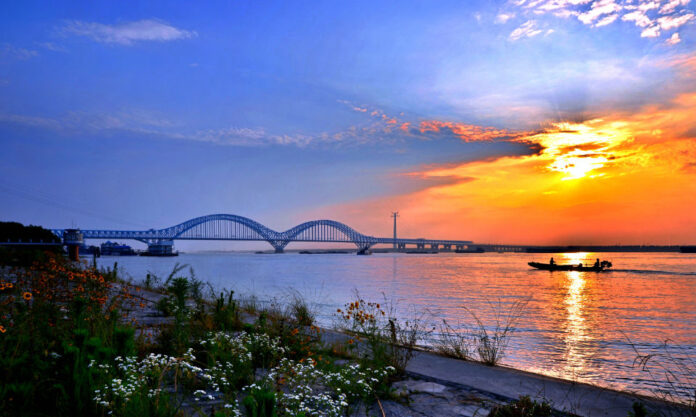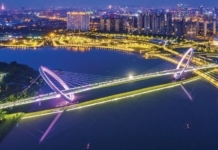Key to being able to get us from Nanjing to Beijing in just 3 hours and 13 minutes is the Nanjing Dashengguan Yangtze River Bridge, so much so, in fact, they put it on a coin.
After they depart from Nanjing South Railway Station, the fastest trains headed north will have accelerated to 300km/h by the time they make the Bridge. But that’s no impediment to them, since this bridge has the highest loading capacity in all of China, at some 920 kilonewtons per metre of dead load.
Today, the Nanjing Dashengguan Yangtze River Bridge is recognised as being the longest in the world with a continuous arch. It is also the first bridge in China to carry six railway lines.
From the outside on each side, these lines are utilised for Nanjing Metro Line S3, the Shanghai-Wuhan-Chengdu Railway and the Beijing-Shanghai High Speed Railway, respectively, and other routes that intersect along their ways.
With construction officially commencing on 14 September, 2006, full-steel-girder erection began on 27 February, 2008, for the bridge to be successfully completed on 28 September, 2009.
The bridge has an overall length of 9,273 metres, with its main length being 1,615 metres. While trains can traverse the Bridge at speeds of up to 350km/h, they do so with a navigation clearance of 32 metres for ships passing beneath.
The Nanjing Dashengguan Yangtze River Bridge can also withstand magnitude-8 earthquakes.
On 6 December, 2017, Nanjing Metro Line S3 began fare-paying passenger operations, meaning that all six lines of the Bridge had been put in to use.
And so it was that China’s high-speed rail commemorative coins were issued the following year. With a “Fuxing” train occupying the foreground, both Beijing South Railway Station the Dashengguan Yangtze River Bridge fill out the coins’ background.
The Bridge, which cost in excess of ¥3 billion to construct, also won the 2012 George S. Richardson Medal for an outstanding achievement in bridge engineering.
Perhaps too much so. As trains pass over the Bridge at 300km/h, the smooth and near-silent ride across is such that most passengers do not even look up from their phones, missing out on their country’s other great achievement at traversing the Yangtze River.









